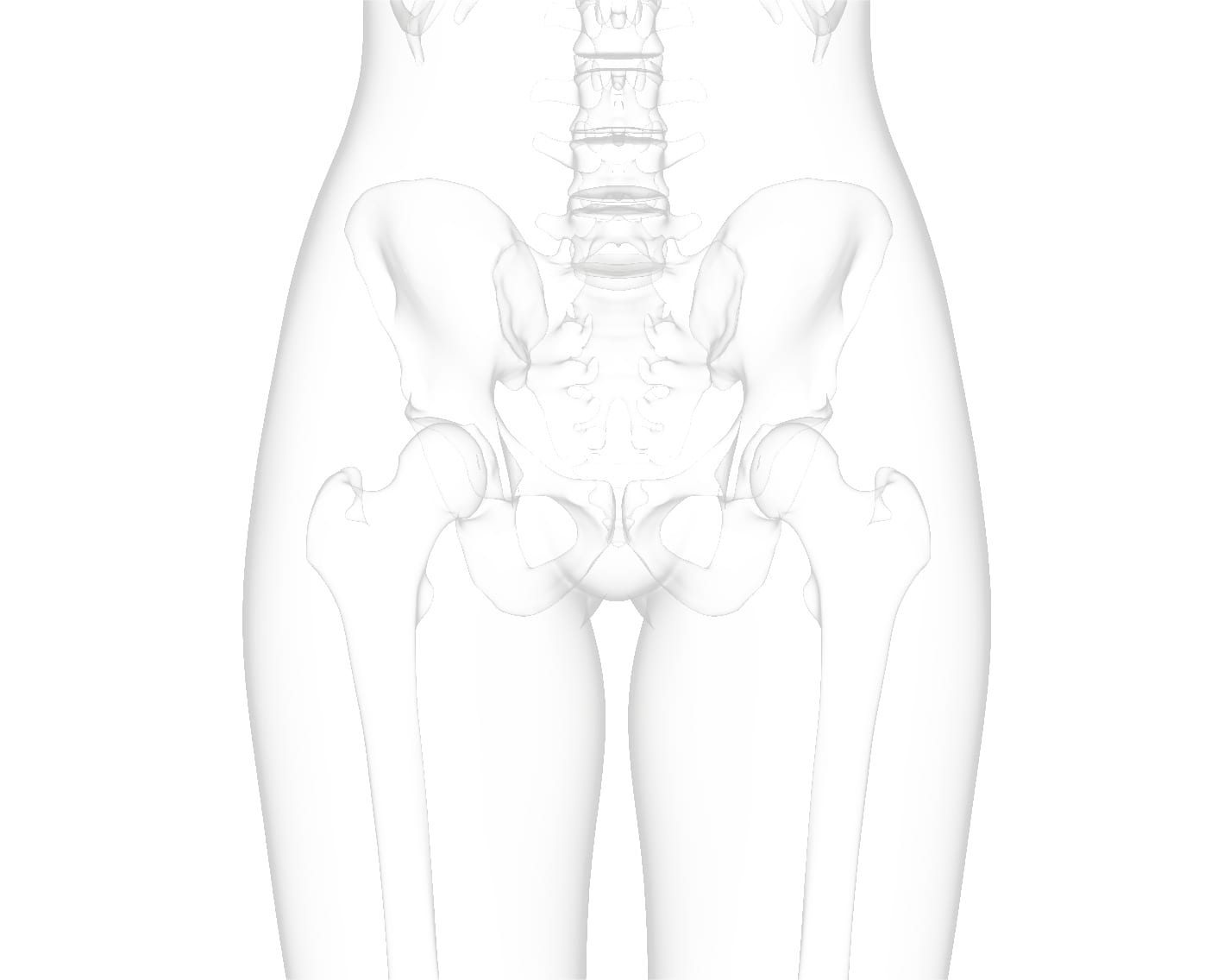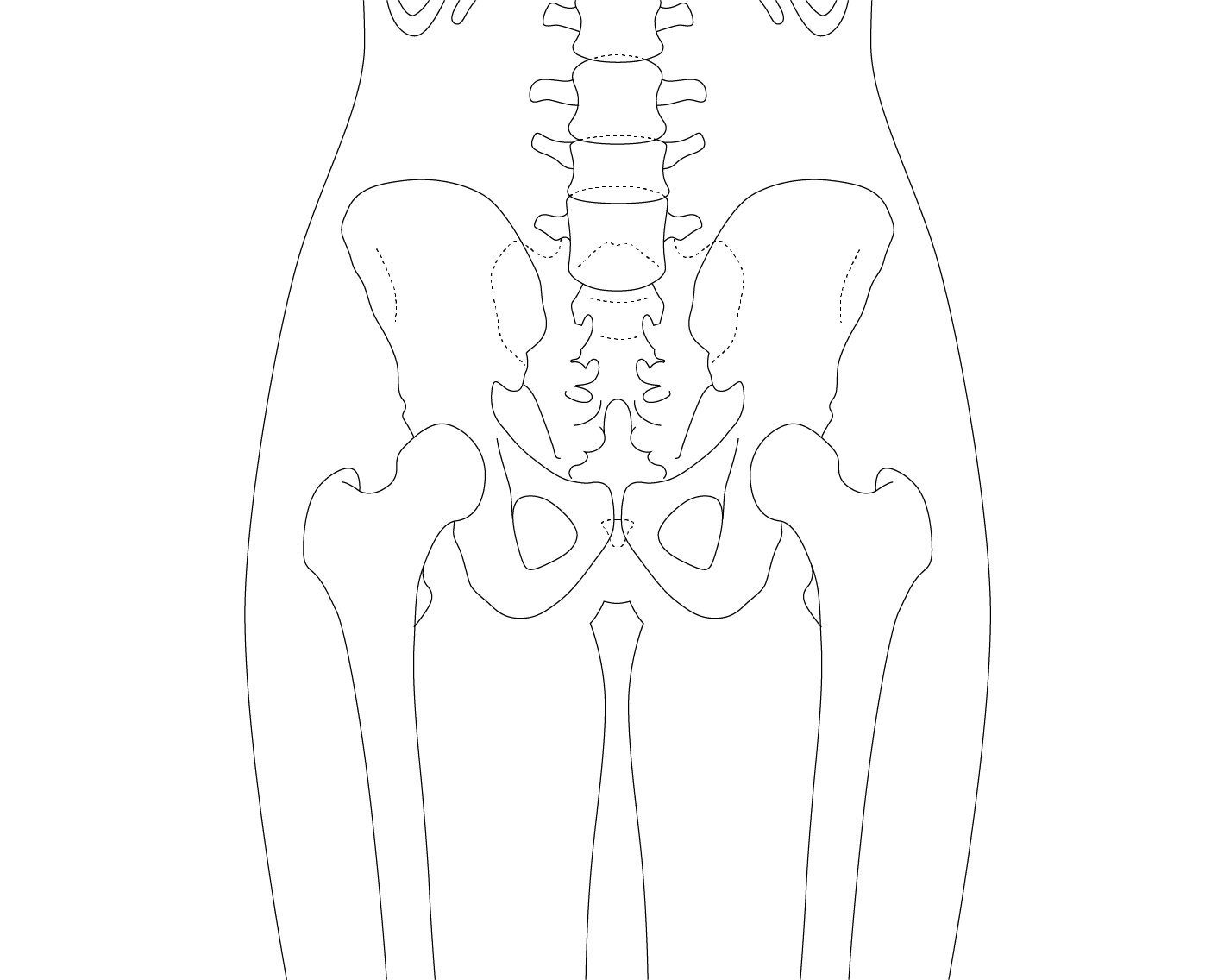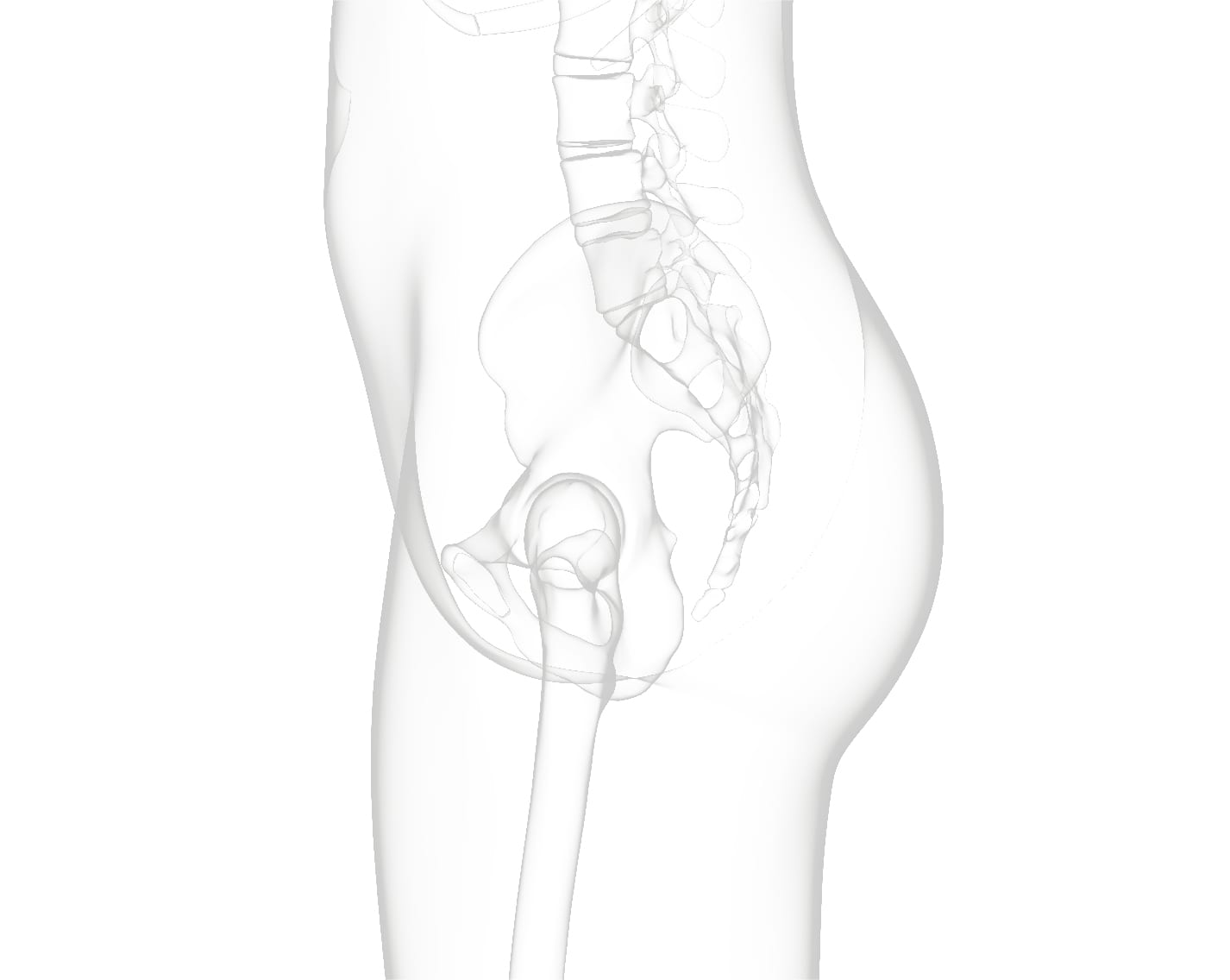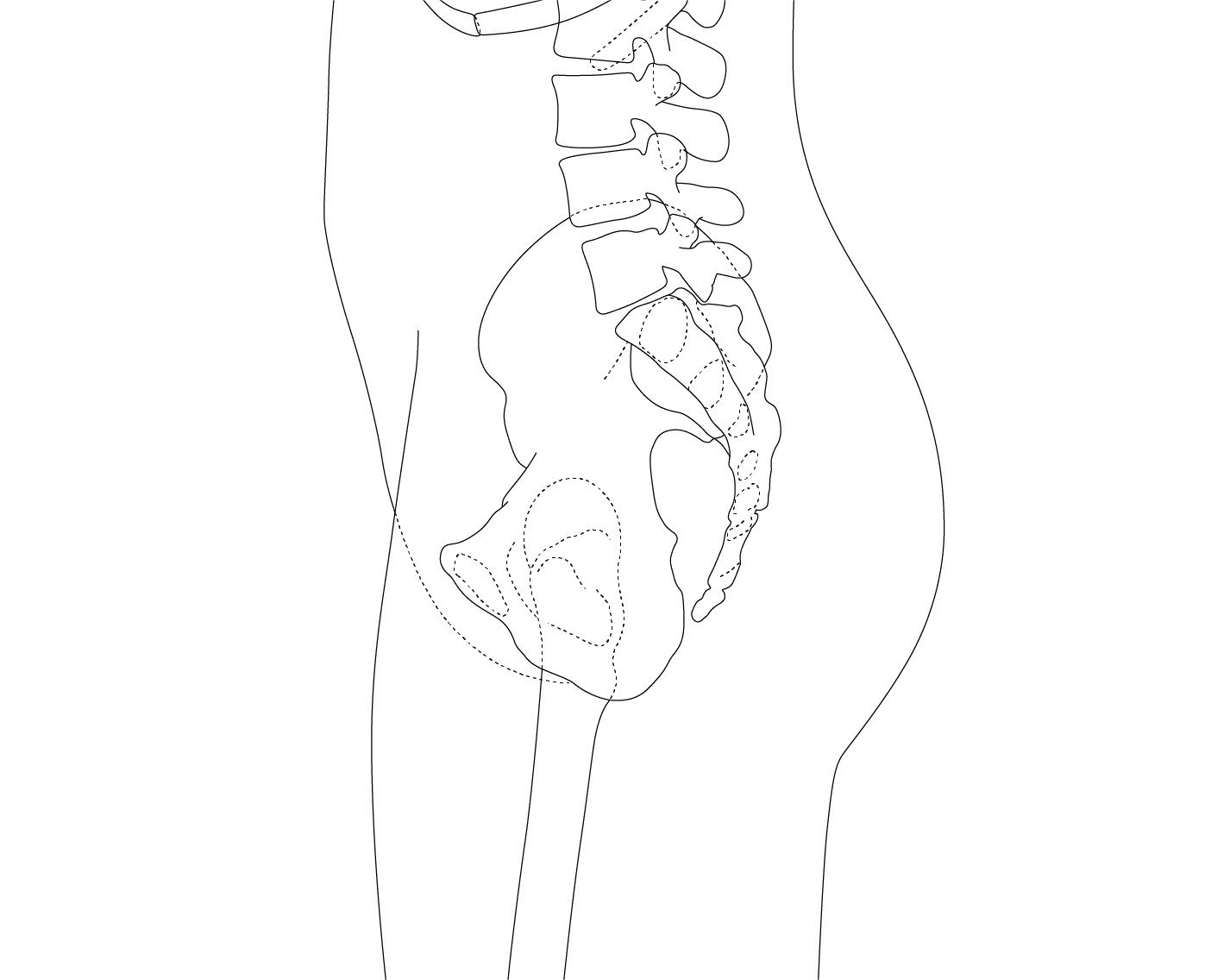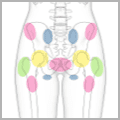Injuries to the hip and pelvic region are common occurrences in sports. Athletes may experience hip pain as a result of a direct impact from a collision or as a result of an overuse syndrome.
The hip is a unique “ball and socket” joint that allows the upper thigh to move forward and back, side to side and rotate freely. It is the largest weight bearing joint in the body. In contrast to other joints that you can feel on the surface, the hip joint is deep, surrounded by strong ligaments and many muscles.
Also called the thigh bone, the femur is the longest, largest, thickest and heaviest bone in the body. The femoral head, or the ball, sits on top of the femur. The femoral head fits into the socket, known as the acetabulum, to form the hip joint. Joint cartilage lines both the head and socket allowing ultra-smooth rotation between these two surfaces. The cartilage also cushions the joint protecting it from impact conditions. The short femoral neck connects the femoral head to the femur. Its length allows for maximum leverage and rotation. The two hip bones (one on each side) come together in the front and back and unite to form the pelvis. The pelvis carries and transmits weight from the ground to the lower limbs and then to the torso and upper body when standing, walking or running. Each hip bone is further divided into three sections: the ilium, the ischium and the pubis.
The acetabular labrum is an extension of the joint cartilage that surrounds the socket. It acts to deepen the socket for maximum stability and to absorb certain loads and stresses on the joint. Three strong ligaments form the hip capsule and attach the femur bone to the pelvis. They stretch over the joint for maximal stability and support.
Use the image map above or the forum links to the right to take a deeper dive into common hip and pelvic injuries.


